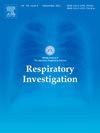Guidance for type 2 inflammatory biomarkers
IF 2.4
Q2 RESPIRATORY SYSTEM
引用次数: 0
Abstract
Type 2 inflammation in the airways and lungs is inflammation induced by type 2 cytokines such as IL-4, IL-5, and IL-13, produced primarily by type 2 helper T cells and type 2 innate lymphoid cells, and causes changes in the physiology and structure of the airways. Type 2 inflammation is currently in the spotlight because of its direct link to the treatment of several airway and lung diseases. Abundant evidences have accumulated that inflammatory biomarkers such as blood eosinophils, fractional exhaled nitric oxide, and IgE are essential clinical tools in the diagnosis and management of asthma and COPD. It is well known that asthma and COPD have diverse inflammatory phenotypes even when clinical features are similar, and it has been demonstrated that assessment of airway inflammation with biomarkers can improve diagnostic accuracy, determine safer and more effective treatment strategies, and predict future risks such as exacerbations and lung function decline. The Japanese Respiratory Society has published clinical practice guidelines for the evaluation of type 2 inflammation in the airways and lungs. In addition to asthma and COPD, the guide covers a wide range of airway and lung diseases, including interstitial lung disease, allergic bronchopulmonary mycosis, allergic rhinitis, and eosinophilic chronic rhinosinusitis. It also provides comprehensive guidelines covering a variety of clinical biomarkers. The purpose of this guidance is to provide evidences for the interpretation of type 2 inflammation measurements and to promote the widespread use of inflammation assessment to further improve the efficiency of airway and respiratory disease management.
2型炎症生物标志物指南
气道和肺部的2型炎症是由2型细胞因子如IL-4、IL-5和IL-13诱导的炎症,主要由2型辅助性T细胞和2型先天淋巴样细胞产生,并引起气道生理和结构的改变。2型炎症目前受到关注,因为它与几种气道和肺部疾病的治疗直接相关。大量证据表明,血液嗜酸性粒细胞、呼出一氧化氮分数和IgE等炎症生物标志物是哮喘和慢性阻塞性肺病诊断和治疗的重要临床工具。众所周知,即使在临床特征相似的情况下,哮喘和COPD也具有不同的炎症表型,并且已经证明用生物标志物评估气道炎症可以提高诊断准确性,确定更安全有效的治疗策略,并预测未来的风险,如恶化和肺功能下降。日本呼吸学会发布了评估呼吸道和肺部2型炎症的临床实践指南。除哮喘和慢性阻塞性肺病外,该指南还涵盖了广泛的气道和肺部疾病,包括间质性肺病、过敏性支气管肺真菌病、过敏性鼻炎和嗜酸性慢性鼻窦炎。它还提供了涵盖各种临床生物标志物的综合指南。本指南的目的是为2型炎症测量的解释提供证据,促进炎症评估的广泛应用,进一步提高气道和呼吸系统疾病管理的效率。
本文章由计算机程序翻译,如有差异,请以英文原文为准。
求助全文
约1分钟内获得全文
求助全文

 求助内容:
求助内容: 应助结果提醒方式:
应助结果提醒方式:


